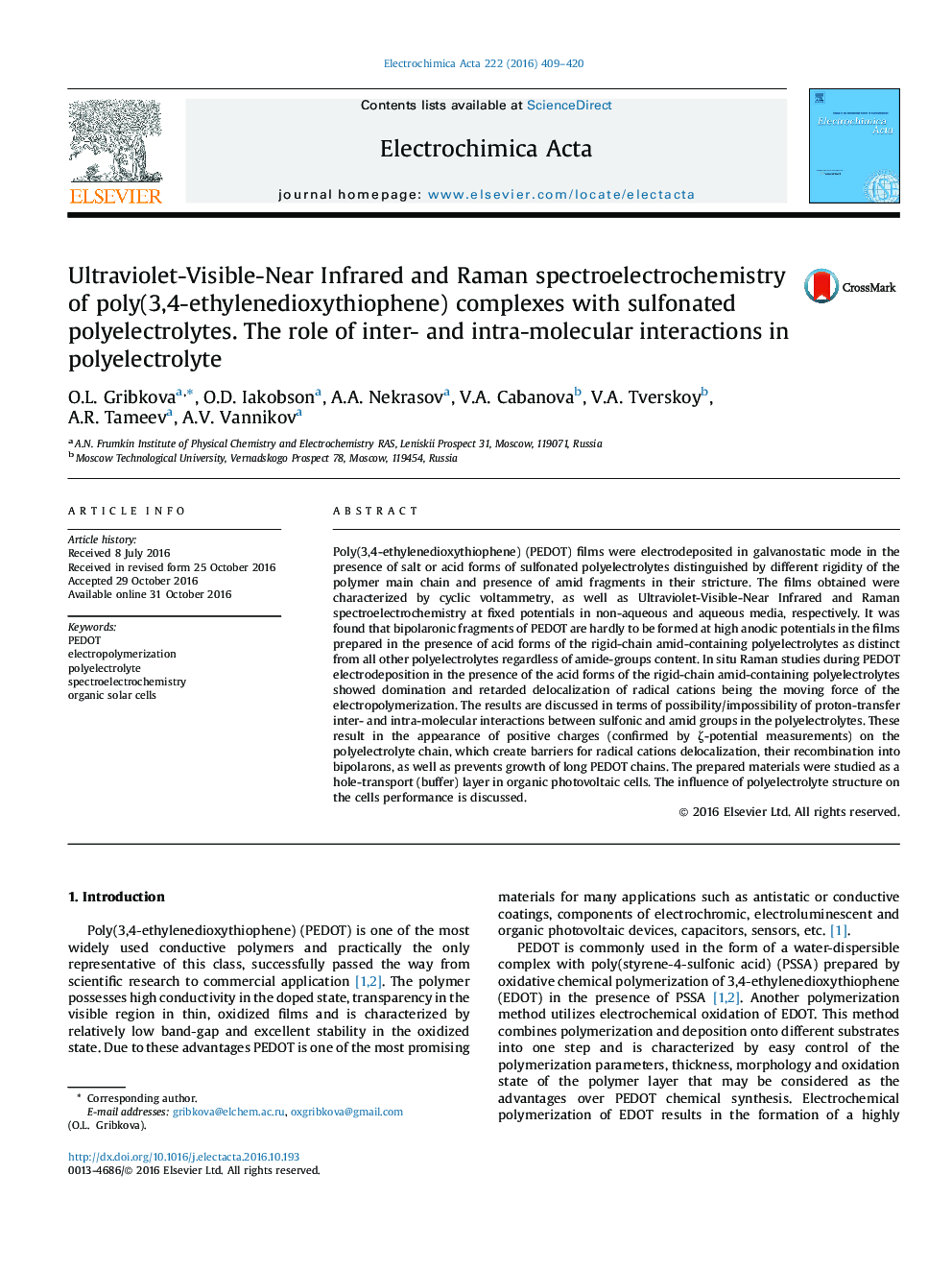| کد مقاله | کد نشریه | سال انتشار | مقاله انگلیسی | نسخه تمام متن |
|---|---|---|---|---|
| 6472596 | 1424135 | 2016 | 12 صفحه PDF | دانلود رایگان |
- Different sulfonated polyelectrolyte templates are used for PEDOT electrodeposition.
- Inter-/intra-molecular interactions in polyelectrolyte interfere with PEDOT synthesis.
- Proton-transfer between sulfo/amid groups creates positive charges in polyelectrolyte.
- Positive charges in polyelectrolyte hinder delocalization of PEDOT radical cations.
- Electrodeposited PEDOT/polyelectrolyte films were tested in organic solar cells.
Poly(3,4-ethylenedioxythiophene) (PEDOT) films were electrodeposited in galvanostatic mode in the presence of salt or acid forms of sulfonated polyelectrolytes distinguished by different rigidity of the polymer main chain and presence of amid fragments in their stricture. The films obtained were characterized by cyclic voltammetry, as well as Ultraviolet-Visible-Near Infrared and Raman spectroelectrochemistry at fixed potentials in non-aqueous and aqueous media, respectively. It was found that bipolaronic fragments of PEDOT are hardly to be formed at high anodic potentials in the films prepared in the presence of acid forms of the rigid-chain amid-containing polyelectrolytes as distinct from all other polyelectrolytes regardless of amide-groups content. In situ Raman studies during PEDOT electrodeposition in the presence of the acid forms of the rigid-chain amid-containing polyelectrolytes showed domination and retarded delocalization of radical cations being the moving force of the electropolymerization. The results are discussed in terms of possibility/impossibility of proton-transfer inter- and intra-molecular interactions between sulfonic and amid groups in the polyelectrolytes. These result in the appearance of positive charges (confirmed by ζ-potential measurements) on the polyelectrolyte chain, which create barriers for radical cations delocalization, their recombination into bipolarons, as well as prevents growth of long PEDOT chains. The prepared materials were studied as a hole-transport (buffer) layer in organic photovoltaic cells. The influence of polyelectrolyte structure on the cells performance is discussed.
192
Journal: Electrochimica Acta - Volume 222, 20 December 2016, Pages 409-420
